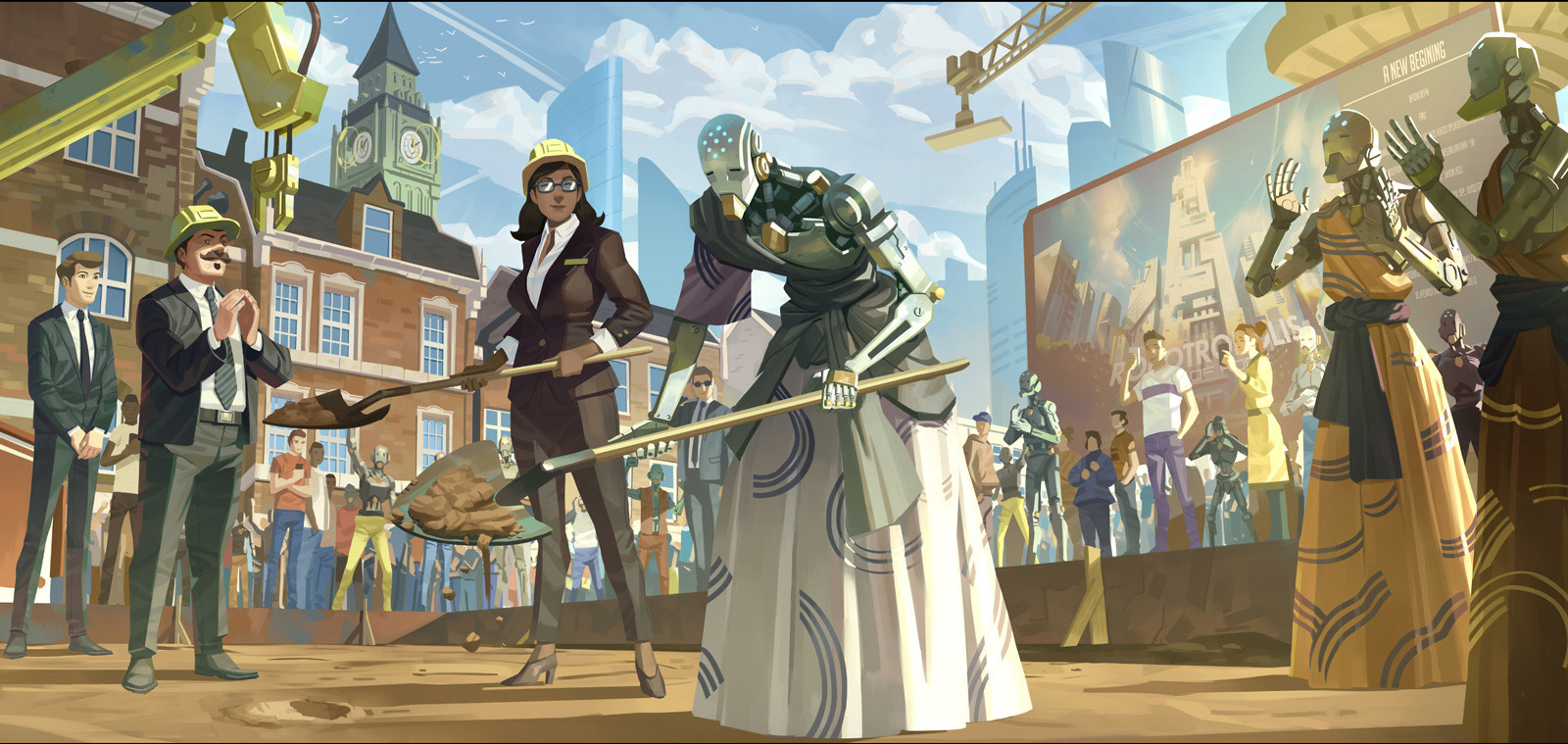The main reappearing character will be SAM : Socialised Autonomous Model - My owe interpretation of a service robot in the future, with the function of catering to the human needs in the changing modern world. The idea is that each of mood paintings will portray the interaction of SAM with their corresponding 'owner' (who come from different backgrounds, age and gender..) and through it, highlights the talking point within my essay on how new technology became both a blessing and a curse for our modern relationship and interaction. The concept of the owners in my head now includes : an elderly woman in a retirement home, a shut-in young adult, and one-more undecided character.
With that said, the focus of this early few weeks will be on designing SAM.

My main theory in coming up with these initial sketch of SAM is that Form should follow functions.
As part of the narrative I have, SAM is intended to be a platform of physical connection between the owner and the Virtual character that is applied on the robot via the means of VR ( more explanation of the concept will be available on each of the moods painting.) So the first key point for SAM is that it has too look and feel like a regular human to an extend, that is to say it has to have a regular humanoid form.
 Basing of from that I started looking alot into modern service robot like Asimo and Pepper from Japan. While less 'realistic' than I want, what I learn from them is the essence of 'approachable design'. Its clean (white throughout), simplistic and has a lot of curves (indicating smoothness, softness and non-threatening, much like an animated character). So I want to take that and applied to a more realistic model, which resulted in the slide above.In the same slide, you can see my first concept of the application of the human-image onto SAM as well, in quite a literal sense, however, my concept later separates in the virtual image and the physical robot entirely.
Basing of from that I started looking alot into modern service robot like Asimo and Pepper from Japan. While less 'realistic' than I want, what I learn from them is the essence of 'approachable design'. Its clean (white throughout), simplistic and has a lot of curves (indicating smoothness, softness and non-threatening, much like an animated character). So I want to take that and applied to a more realistic model, which resulted in the slide above.In the same slide, you can see my first concept of the application of the human-image onto SAM as well, in quite a literal sense, however, my concept later separates in the virtual image and the physical robot entirely.With that said, I still want it to have a defined 'face' - as it is in my opinion a crucial aspect in terms of how human can relate and feel empathy for artificial things, and thereby more willing to purchase it from a business and marketing aspect ( various examples of our need to put a human face on everything in real life.)
Face design will be on Twitter poll to gather opinions on which design seems most approachable.
Several body-types came after the face. More varieties will be explore and then nail down to 1 design, as I want SAM to be in the beginning as gender-neutral as possible, and only alter its form to caters to the human's specification. Although among these 3 designs, I'm liking 'Samantha' the best, so that can be the base for me to move forward from.







 Her
Her

